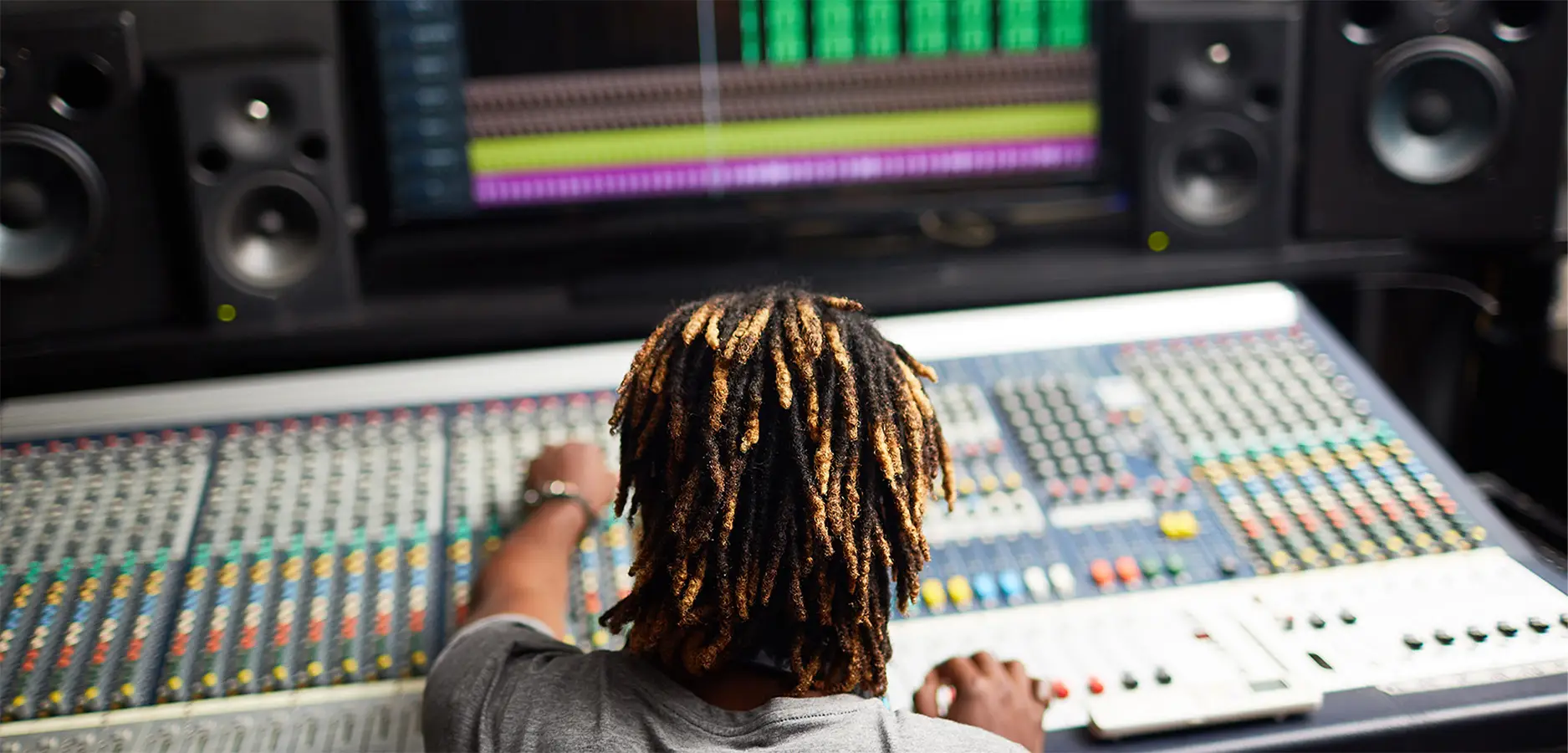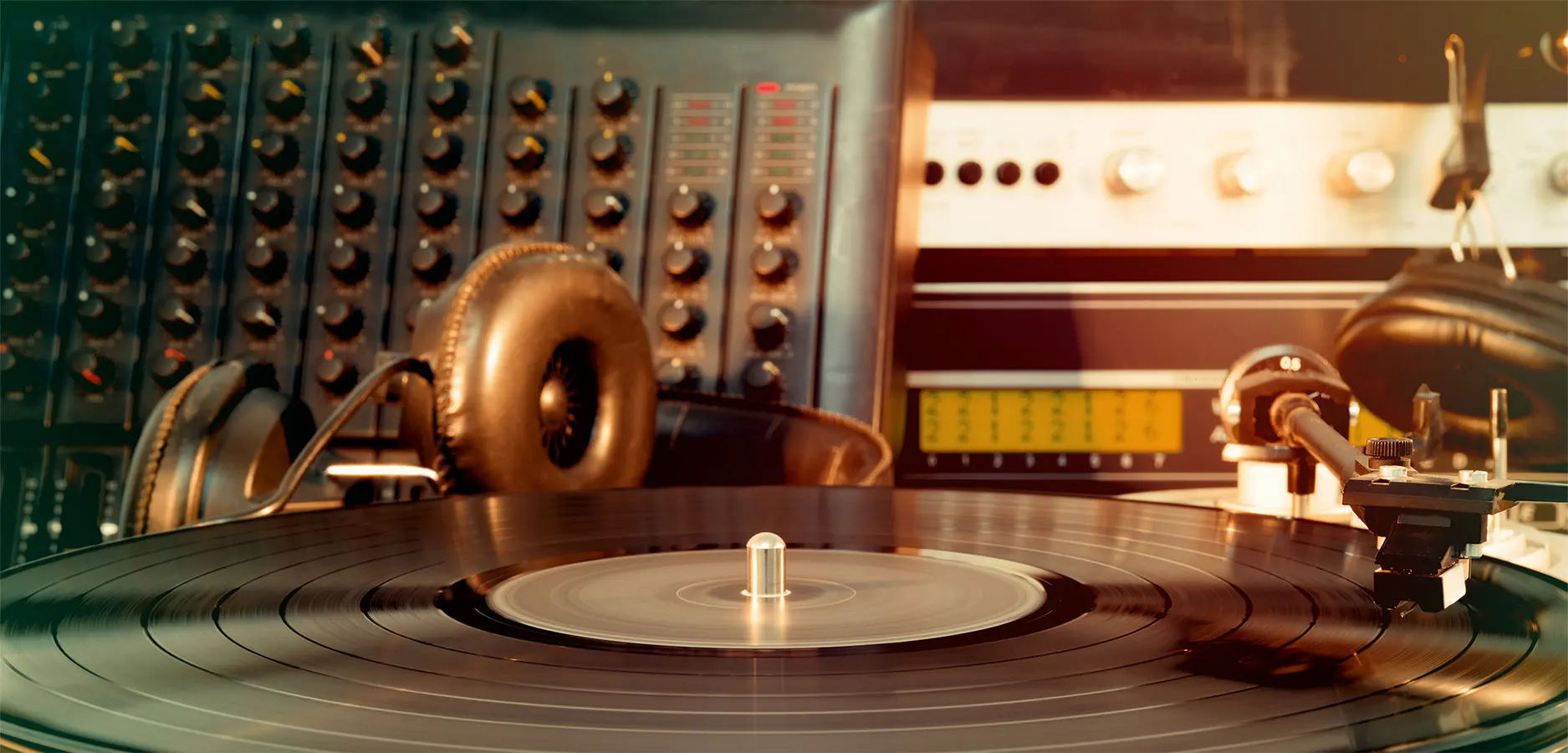In this article:
Back in the day, producers didn’t have endless plugins, massive sample libraries, or AI mixing assistants. They had to get creative with the gear they had—sometimes making entire tracks with just a few pieces of hardware. But here’s the thing: a lot of those old-school techniques still sound incredible today.
Instead of relying on automation to do the work, analog producers focused on character, texture, and feel—things that can easily get lost in the digital world. Let’s dive into some vintage production tricks that can add a unique touch to your modern tracks.
1. Saturation: The Warmth That Digital Can’t Fake
Before digital distortion and saturation plugins, producers used real tape machines and analog gear to add warmth and depth to their sounds. The slight imperfections, harmonic distortion, and subtle compression created a richness that modern digital recordings often lack.
✅ How to use it today:
- Instead of using sterile, clean digital sounds, add a tape saturation plugin like UAD Studer A800 or Waves J37to your synths, drums, or even your entire mix.
- Try pushing the input gain on an analog-modeled compressor to introduce slight distortion and harmonic richness.
- For a DIY approach, run sounds through an old cassette deck or VHS recorder and sample the output.
The goal isn’t to make your mix sound vintage, but to add organic depth and movement that’s often missing in fully digital productions.
2. Filtering by Hand: Expressive Automation That Feels Alive
Before automation lanes and MIDI controllers, producers manually turned knobs while recording, shaping filters, EQs, and effects in real-time. This resulted in more natural, evolving sounds compared to the ultra-precise automation we often see in DAWs today.
✅ How to use it today:
- Instead of drawing automation in your DAW, record yourself manually tweaking a filter cutoff, delay feedback, or synth modulation while playing back your track.
- Use a MIDI controller with assignable knobs and physically interact with your sound instead of clicking and dragging automation points.
- If you don’t have a controller, try mapping a synth’s filter cutoff to your mod wheel or aftertouch for expressive, hands-on control.
Small imperfections in movement make everything sound more human and dynamic, especially in breakdowns and transitions.
3. Sampling Like a Crate-Digger
In the early days of electronic music, producers didn’t have massive sample packs at their disposal. They sampled sounds from vinyl records, old movies, and random objects around them. This gave their tracks a unique characterthat couldn’t be found in stock loops.
✅ How to use it today:
- Instead of grabbing the same Splice loops as everyone else, record your own samples using a phone or portable recorder. It could be household sounds, street noise, or random percussion.
- Dig into forgotten sample libraries, obscure YouTube videos, or even cassette tapes for unique textures and one-shots.
- Try granular synthesis or resampling small snippets of old tracks to create something completely new.
Modern sample packs are great, but the producers who stand out are the ones who find sounds no one else is using.
4. Tape Delay & Spring Reverb: The Unpredictable Magic
Back in the day, reverb and delay weren’t just plugins—you had to work with actual hardware units like tape echoes and spring reverbs. These effects weren’t perfectly clean or predictable, which added a raw, textured quality to the sound.
✅ How to use it today:
- Use tape delay plugins like Soundtoys EchoBoy or UAD Galaxy Tape Echo instead of digital delays. These introduce slight pitch variations and warmth.
- Instead of a clean reverb, experiment with spring reverb emulations like AudioThing Springs or Arturia Rev SPRING-636 for a retro feel.
- Resample your delays and reverbs onto an audio track, then chop, stretch, and reverse them to create unique transitions and textures.
Even in modern, polished EDM tracks, a bit of imperfect, analog-style reverb and delay can make a huge difference.
5. Limiting Gear = More Creative Thinking
One of the biggest differences between old-school producers and today’s DAW users? They had fewer tools, which forced them to be more creative. Instead of scrolling through 500 synth presets, they had to tweak a handful of sounds until something worked.
✅ How to use it today:
- Set a personal challenge: Produce a full track using only one synth or only stock plugins in your DAW.
- Instead of endless layering, try getting the most out of each sound by focusing on EQ, dynamics, and modulation.
- Work faster: Give yourself a deadline of one session to finish an arrangement and resist the urge to over-tweak.
Some of the best music was made under limitations. Creativity comes from working with what you have—not from having everything.
Bringing Old-School Techniques into Modern Production
You don’t need vintage hardware to bring these techniques into your workflow. The key is mindset—instead of relying on presets, automation, and stock effects, take a more hands-on approach and embrace the imperfections that make music feel alive.
Whether it’s adding real-time movement to your sounds, experimenting with analog-style processing, or forcing yourself to be creative with fewer tools, these old-school methods can make your music feel more unique, expressive, and personal.
Try bringing one of these techniques into your next track and see how it changes your workflow. You might be surprised at how much character it adds.
Read other articles
 April 4, 2025
April 4, 2025Stop Letting AI Master Your Tracks (Here’s What You’re Missing)
Stop Letting AI Master Your Tracks (Here’s What You’re Missing)
 April 4, 2025
April 4, 2025AI Mastering vs Human Ears: Why Real Experience Still Wins
AI Mastering vs Human Ears: Why Real Experience Still Wins
 April 4, 2025
April 4, 2025What You Learn from Watching Your Track Get Mixed
What You Learn from Watching Your Track Get Mixed

